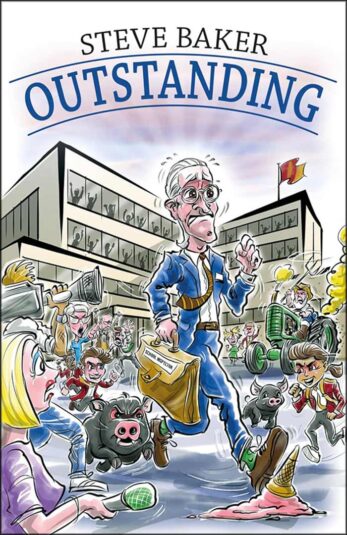Publisher
Bloomsbury
ISBN 10
1801993297
Published
7 Dec 2023
Many school leaders work relentlessly to provide at least a good standard of education for the pupils in their care in terms of outcomes and opportunities. Nonetheless, only few schools are truly outstanding when considering the quality of education, they provide and the outcomes their pupils achieve in national assessments or examinations.
With Outstanding School Leadership and through the lens of his experience as CEO of a multi-academy trust serving a community with high levels of deprivation and social challenges, Peter Hughes tries to answer the question: ‘what does outstanding look like in education, and why are most schools not?’
Hughes draws on his experience of education, his own challenging background and his drive for social justice to set out key pillars, values and practices of school leadership that he has learned on his journey from Australia to England and from teacher to CEO.
The book’s structure is set out in nine main sections which each provide a case study offering a narrative of leadership through storytelling – which Hughes draws on his Australian vernacular to refer to as the yarn. The book draws on literature (albeit in a limited way) to advance debate, and each section concludes with top tips.
One of the book’s key insights is that the role of principal and CEO are fundamentally different. Yet, the first generation of MAT CEOs are largely drawn from school leadership and, like Hughes, had to follow a steep learning curve. Not all were prepared for that shift, nor for the tribulations of building a new multi-academy trust from scratch.
The new DfE multi-academy trust leadership development programme is expressly aimed at filling that gap for the next generation of trust leaders, and this book would make a fantastic accompaniment for anyone who is on that journey.
It’s remarkable, in the absence of such training, that we have so many high-performing MATs. But the road to ‘outstanding’ is certainly made easier by getting the fundamentals right at the start. For Mossbourne Federation, the key was to focus on a clearly defined mission: ‘we are changing children’s lives for the better by creating an environment where learning is the norm’. The MAT’s policies and practices, structures and values were then all aligned to that aim.
It provides a crystal-clear example of what it means to develop an exceptional school
Filling the shoes of his famously hard-nosed and highly successful predecessor, Sir Michael Wilshaw, can’t have been an easy thing to do, and Hughes talks about the pressure associated with that. But it’s also evident that Wilshaw’s influence has brought many benefits. Hughes follows his point about the value of being mission-centric with this: “Quite simply, if an initiative, idea, or strategy doesn’t fit the mission, why are we doing it?”
Having personally received some coaching from Sir Michael, I can honestly say that it’s a sentence either of these men might have written. But that doesn’t mean outstanding leadership is formed in a rigid mould. Far from it. It is clear throughout the book that Hughes has sustained educational excellence at a growing Mossbourne Federation through his own authentic leadership approach, grounded in his working-class background and disruptive school experience from early childhood.
Where the book is a little weaker is in the application of theoretical elements. For example, Hughes draws on the notion of ‘wicked problems’, but it is not entirely clear to me whether this relates to school improvement or to scaling the success of Mossbourne Academy across the trust.
But the practical aspects more than make up for this. From recruitment to attainment, and from teaching and learning to developing talent, it provides a crystal-clear example of what it means to develop an exceptional school and to sustain an outstanding education.
More than that, it’s all founded on a positive and empowering view of human nature. “Most people,” Hughes posits, “have an inherent desire to belong and be an important part of something greater than themselves”. The secret of outstanding leadership may very well be to tap into that, and for that insight alone it’s an essential read for all leaders in education – particularly those with interest in multi-academy trust leadership.













Your thoughts